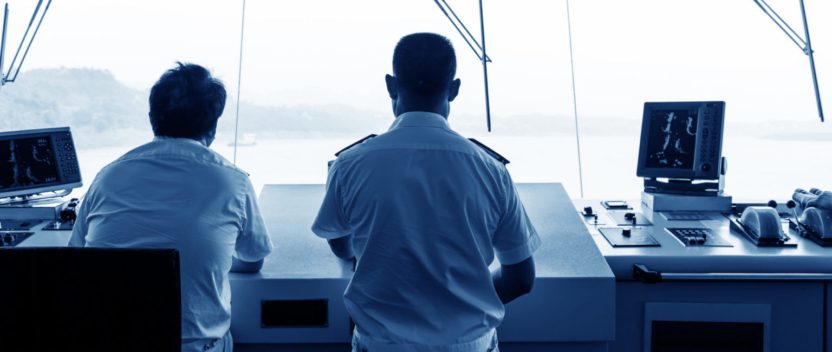A roundup of the news in July
As the industry settles in for the silly season there was still plenty of serious news, with plans for new tracking services, potential choice of GMDSS providers, a call for the establishment of places of refuge and a campaign in Singapore that will recognise a safety mindset.
ESA plans satellite AIS
The European Space Agency (ESA) has unveiled plans to provide a new satellite-based vessel identification and tracking service by 2018.
The agency has signed a public-private partnership agreement with Europe’s LuxSpace and Canada’s exactEarth for the deployment of up to two new ‘microsatellites’.
The potential constellation of satellites is designed to provide a dedicated satellite-based complement to AIS, which uses GPS and local radio signals to improve navigational safety and provide secondary tracking services.
The new system has the potential to extend surveillance capability beyond coastal areas and improve signal integrity, the agency said.
Iridium GMDSS plan recognised…
Satellite operator Iridium moved a step closer towards being recognised as a potential operator of the Global Maritime Distress and Safety System (GMDSS). Iridium’s application was approved for consideration by the Maritime Safety Committee by the IMO’s Sub-Committee on Navigation, Communications and Search and Rescue (NCSR).
Iridium is keen to provide an alternative to the incumbent provider Inmarsat by stressing that its satellite constellation provides polar coverage – something incumbent Inmarsat’s does not – to reflect the potential of future traffic via the Northern Sea Route. Inmarsat argues that Iridium’s constellation of low earth orbiting satellites is not capable of providing the 99.99% uptime required under IMO mandate.
Following consideration by the MSC in November, a group of experts will then carry out a technical and operational evaluation and its report will be reviewed by the NCSR sub-committee prior to final approval by the MSC.
Iridium will begin deploying its second generation constellation, Iridium NEXT in 2015 and said that in anticipation of IMO recognition it is working with equipment manufacturers for the production and certification of GMDSS terminals that use its network.
…as Inmarsat unveils upgraded alternative
Satellite operator Inmarsat has formally unveiled its upgraded version of GMDSS, the Maritime Safety Data Service (MSDS) for FleetBroadband.
MSDS will continue to provide the mandated Inmarsat C safety services including distress alerting, priority messaging and SafetyNET broadcasts with the addition of new data based services as a result of moving the system onto the newer I-4 satellites.
This will enable mariners to use the system to take advantage of ‘value-added’ safety and navigation applications and content such as chart updates, telemedicine and an instant chat function between multiple vessels and maritime rescue coordination centres.
Peter Blackhurst, head of Maritime Safety Services at Inmarsat said the company was “working closely with the IMO to bring our new service to market with the aim of eventually gaining SOLAS approval for both FleetBroadband data and voice GMDSS services”.
The MSDS initiative has received funding from ESA which has also awarded a contract to Inmarsat partner Cobham SATCOM to develop a terminal with MSDS functionality, which is expected to be available next year.
Beware of social media says Videotel
Maritime E-Learning provider Videotel has released Social Media at Sea, a new module addressing the dangers of inappropriate use of social media by crew.
Aimed at all seafarers able to use social media sites via satellite, Videotel CEO Nigel Cleave said the objective was to make seafarers “aware of the pitfalls associated with the publishing of text, pictures and video clips and to provide the tools to ensure accurate, respectful and responsible posting, in line with any social media policy in place.”
Produced in conjunction with crisis management consultancy MTI Network, the programme is available online, on DVD and eLearning CBT module.
Lyras bemoans lack of places of safety
Leading London Greek shipping community figure John Lyras has called for concerted international action on the provision of places of refuge for ships involved in casualties.
Writing in the London P&I Club’s 2014 Annual report, John Lyras said 12 years after the loss of the tanker Prestige disaster, efforts to mitigate pollution or other risks in contemporary casualties were being hampered by a reluctance to provide the ships involved with a place of refuge.
Referencing the incidents involving the containership MSC Flaminia and chemical tanker Maritime Maisie, Lyras said, “There is no easy answer. It is understandable that communities in areas of coastline where refuge may be sought will be reluctant to be exposed to the risk of pollution.
Since the Prestige casualty, both the P&I and Hull & Machinery insurance communities have repeatedly campaigned for the establishment of a network of places of refuge where ships can take shelter, when the risk of pollution is increased by their staying at sea.
As more recent casualties have shown, there remained “a compelling need for further concerted international action in this area,” he said.
He stressed the importance of the International Group’s outreach programme and its work to engage with governments and authorities on this issue and the removal of wrecks.
Stability software solution
Software provider Herbert-ABS has published an assessment of the impact of new IMO damage stability regulations on tanker and gas carrier operations.
Company president Hendrik Bruhns said that using approved damage stability verification software is the most practical and cost effective means of demonstrating compliance with the regulations.
The IMO recently adopted guidelines for demonstrating compliance with the requirements for damage stability reporting in April and May 2014 during MEPC 66 and MSC 93, respectively.
The requirements apply to all tankers, as well as to gas and chemical carriers, engaged in international trade and will enter into force on 1st January, 2016 for newbuildings. Existing ships must comply by the first renewal survey after this date and by no later than 1st January, 2021.
Bruhns said that of the four options for compliance with the amendments, three are either impractical, or too expensive to implement. “Owners can in theory meet the requirement using any of the four options available. However, in practice, the logical option is to fit an approved damage stability computer program.
DNV GL Ship Manager for Maersk Line
Class society DNV GL has announced that leading containership owner and operator Maersk Line has begun implementation of its ShipManager software, with pilot testing on five vessels, ahead of a scheduled 250 vessel roll-out next year.
Maersk is the world’s largest container shipping line and will install DNV GL’s ship management software on its owned fleet.
Sebastiaan Van den Wijngaert, senior project manager at Maersk Line IT said implementing ShipManager would enable the company “to replace nine applications we use currently with one integrated, easier to learn, user-friendly and technically up-to-date application.”
Maersk Line will be deploying six ShipManager modules covering technical, procurement, project, crewing, QHSE and analyser functions, the last of which enables the extraction of data from all of the modules for analysis.
Van den Wijngaert added that the new software would “give our fleet managers a transparency they never had before.”
Safer seas in Singapore
The Maritime and Port Authority of Singapore (MPA) has launched the Safety@SeaSingapore campaign in an industry-wide effort to increase awareness of safe practices and encourage a ‘safety-first’ culture at sea.
The Port of Singapore records over 130,000 vessels calls every year and with the size and number of vessels increasing each year the port is keen to maintain its low level of major incidents and avoid repeats of the six major incidents in 2013.
The Safety@Sea Singapore campaign focuses on the human element in marine incidents and MPA Chief Executive Andrew Tan said he wanted to “safeguard against complacency, raise safety standards, and get everyone in the community to do their part.”
Mr Tan was joined by representatives from the Association of Regional Ferry Operators, Singapore Maritime Employers Federation, Singapore Sailing Federation, Singapore Shipping Association, Singapore Power Boat Association, and PSA Marine.
As part of the Safety@Sea Singapore campaign, MPA will work with the maritime community on instilling a strong safety culture, enhancing communication and information sharing with the aim of improving the safe passage of vessels. Companies, vessels and seafarers that display exemplary safety practices will be recognised – safety awards will be presented during the inaugural Safety Awareness Week scheduled for November 2014.


